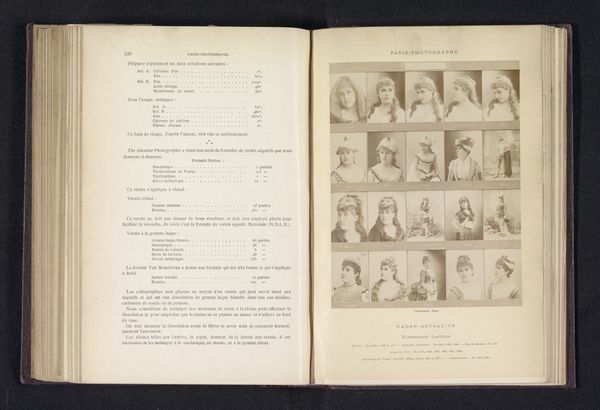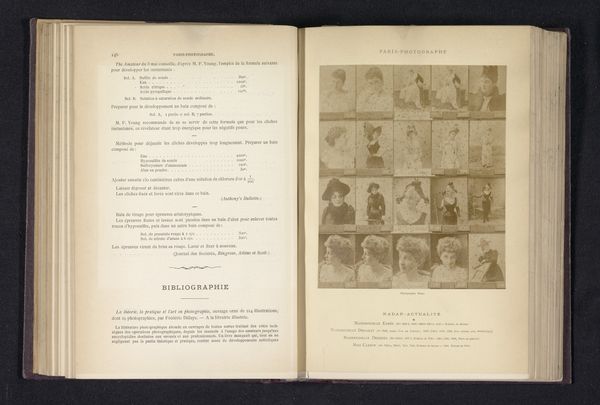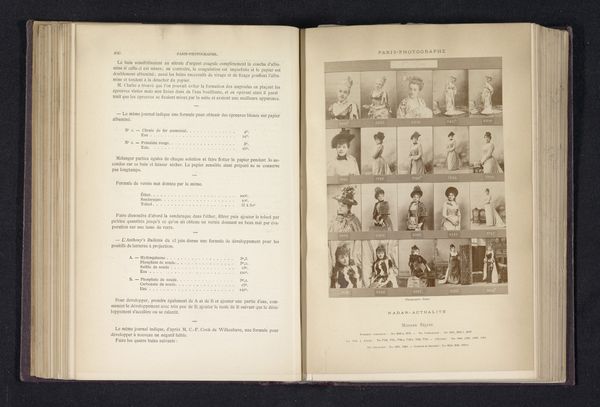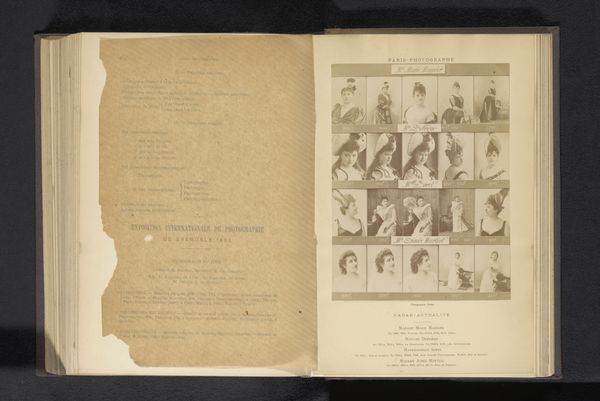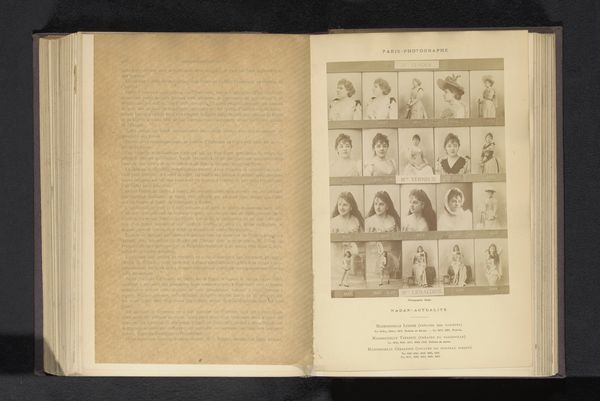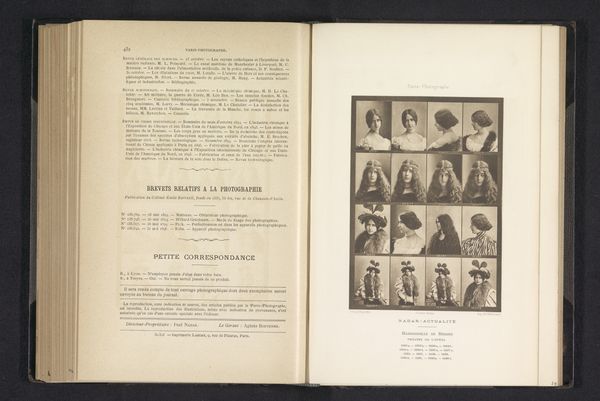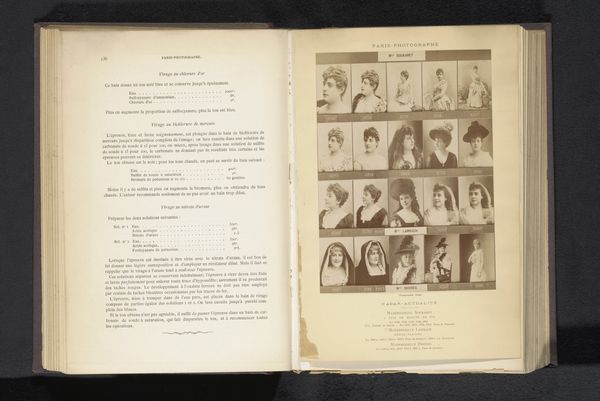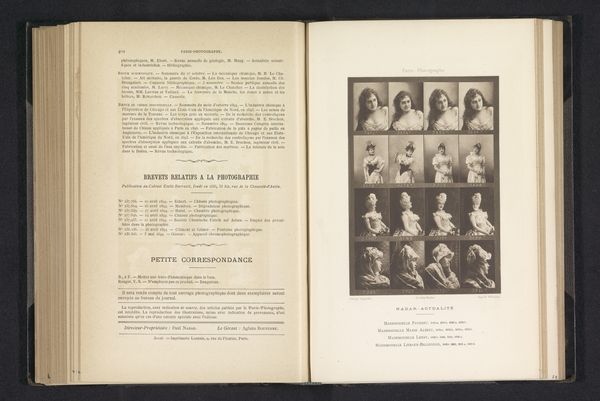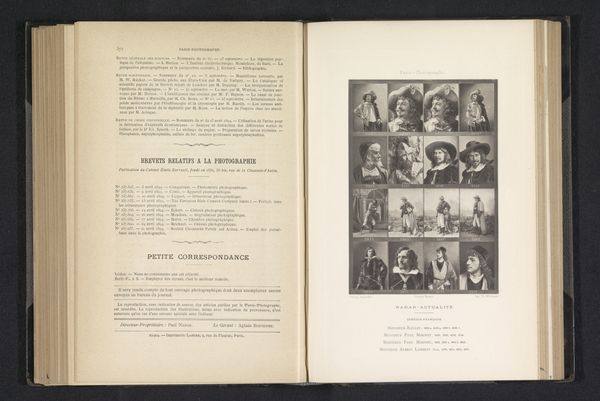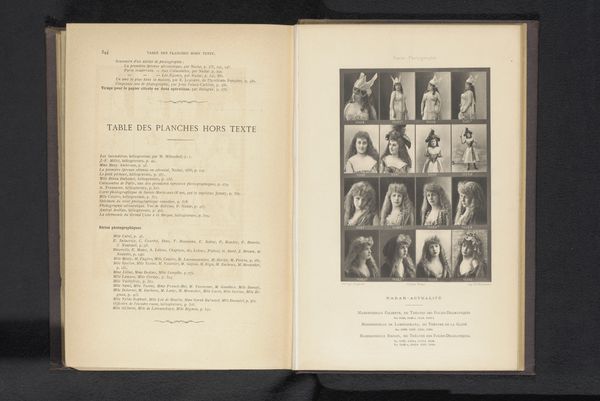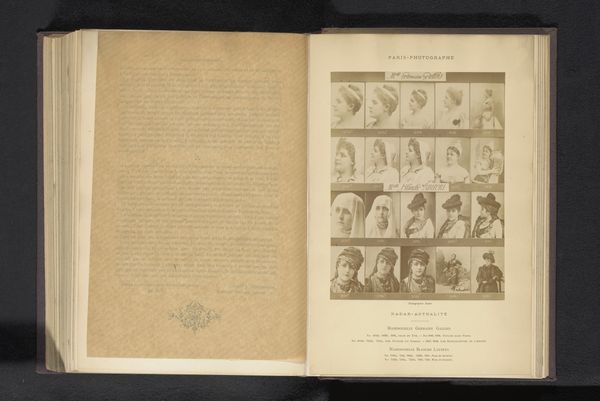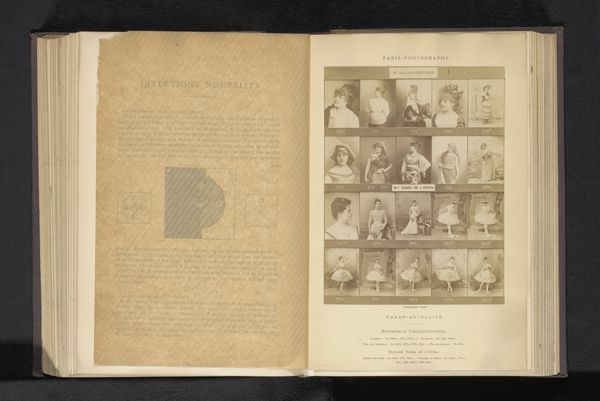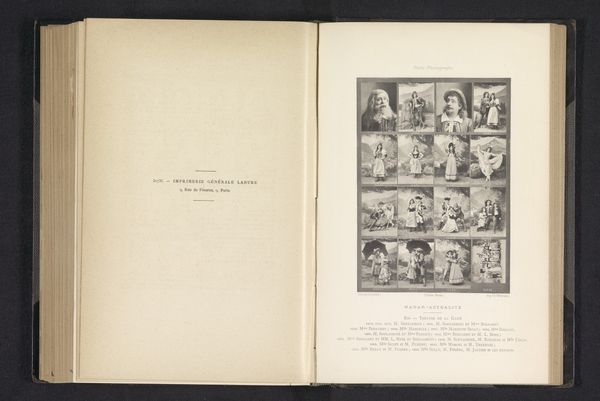
Twintig portretten van Cora Urquhart Brown-Potter en mevrouw Ilbert before 1891
0:00
0:00
photography, albumen-print
#
portrait
#
photography
#
albumen-print
Dimensions: height 171 mm, width 131 mm
Copyright: Rijks Museum: Open Domain
Editor: So this is "Twintig portretten van Cora Urquhart Brown-Potter en mevrouw Ilbert" by Nadar, made before 1891, using albumen print photography. Looking at this contact sheet, or collection of portraits, makes me wonder about celebrity culture at the time. What do you see in this piece? Curator: I see a fascinating intersection of gender, class, and the rise of celebrity culture. Photography was democratizing portraiture, but access to studios like Nadar’s was still largely limited to the wealthy. These women, positioned as objects of public fascination, reflect the performative aspects of femininity dictated by societal norms. How do you think their presentation challenged or reinforced those norms? Editor: That's interesting. Some of the portraits seem quite posed and formal, in line with expectations, but there's a casualness in others, a sense of individual personality breaking through. Was Nadar intentionally playing with these different representations? Curator: Absolutely. Nadar, though a commercial photographer, was also deeply engaged with contemporary social and political currents. These portraits could be read as negotiations between societal expectations and the emerging agency of women, especially within elite circles. We must consider how power dynamics affect visibility and representation. Think about who gets to be seen, and how, in a patriarchal society. Editor: I see your point. I hadn't considered the element of power so explicitly. Thinking about it now, it’s clear this work captures a pivotal moment in how women's identities were being shaped and consumed. Curator: Precisely! It offers a window into understanding both the constraints and the potential for self-expression within the confines of late 19th-century society.
Comments
No comments
Be the first to comment and join the conversation on the ultimate creative platform.
